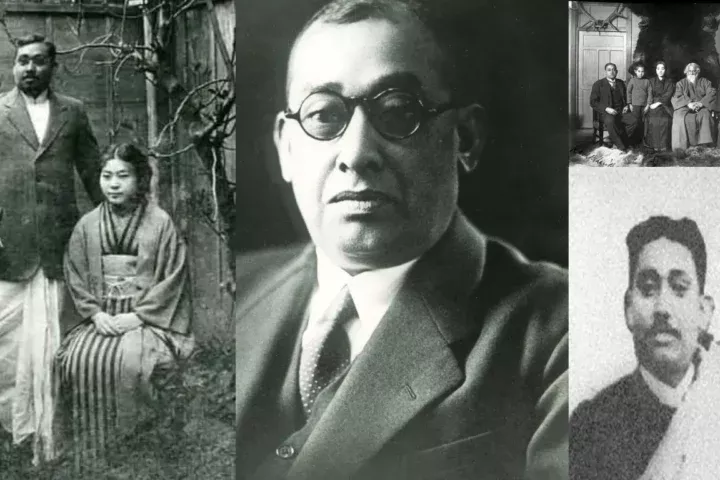10 Mysterious Books all time

Literature has the power to captivate, inspire, and challenge us in countless ways – but there are some books that defy comprehension altogether. Over the centuries, a number of mysterious texts have emerged which have left scholars and readers alike scratching their heads in puzzlement. From handwritten manuscripts in unknown scripts to books with fantastical illustrations and invented languages, these works pose questions that have yet to be answered.
In this article, we’ll take a journey through history to explore 10 of the most enigmatic books ever written, each shrouded in mystery and intrigue. Some were created hundreds of years ago, while others are more recent creations, but all share one thing in common: they remain unsolved mysteries of literature. Join us as we delve into the strange, the cryptic, and the downright bizarre – and attempt to unravel the secrets of these mystifying texts.
The Voynich Manuscript: A Mystery in Ink and Parchment
For centuries, one of the most enigmatic literary works ever created has been the Voynich Manuscript. Written in an unknown script on parchment, this 240-page manuscript has left researchers, historians, and enthusiasts stumped for over 500 years.

The manuscript is named after Wilfrid Voynich, a Polish book dealer who purchased it in 1912, but its origins remain unclear. Carbon-dating suggests that the manuscript was created sometime between 1404 and 1438, and while it has been attributed to various authors and cultures over the years, no one knows for sure who wrote it or why. The Voynich Manuscript is thought to be divided into several sections, with each section featuring illustrations of plants, astronomical diagrams, and human figures in strange and often impossible poses. The illustrations are accompanied by text in an unknown script that has yet to be deciphered. Even the language of the text remains unknown, as it does not conform to any known writing systems.
One theory about the manuscript is that it may be a medical treatise, containing information about herbal remedies and natural cures. Others have suggested that it could be an alchemical work or a religious text, with the illustrations representing mystical symbols and concepts.
Despite numerous attempts to decode the text, the message of the manuscript remains elusive. Many experts have spent countless hours trying to break the code, including some of history’s most skilled cryptographers, but all have come up empty-handed. Some have even questioned whether there is any meaning to the text at all, or if it is simply a hoax designed to confuse and intrigue readers.In recent years, technological advancements have brought new tools to the table for deciphering ancient texts. Researchers have used machine learning algorithms to analyze the structure and patterns of the text, in hopes of uncovering some hidden meaning. Others have analyzed the chemical composition of the ink and parchment, hoping to gain insight into the manuscript’s origins and age.
Despite these efforts, however, the Voynich Manuscript remains as mysterious today as it was when it was first discovered over a century ago. Its illustrations and text continue to fascinate and intrigue those who study it, offering tantalizing glimpses into a world beyond our understanding. As long as it remains unsolved, the Voynich Manuscript will continue to be one of the great enigmas of literary history.The Rohonc Codex : An Unraveling Mystery of Hungary
The Rohonc Codex is an enigmatic manuscript that continues to puzzle scholars and enthusiasts alike. This handwritten text, which is illustrated with intricate drawings and written in a previously unseen script, has been shrouded in mystery since its discovery in the early 19th century. Despite numerous attempts to decipher its meaning, the Rohonc Codex remains one of the great unsolved mysteries of literature.
The origins of the Rohonc Codex remain uncertain, but it is believed to have been created in Hungary sometime in the early 19th century. It was discovered in the possession of Count Gusztáv Batthyány and later acquired by the Hungarian National Museum in 1838. To this day, no one knows who created the manuscript or what purpose it served.

In conclusion, the Rohonc Codex is a testament to the enduring fascination that ancient manuscripts and cryptic texts hold for people. Its elaborate illustrations and mysterious script have puzzled experts for over 200 years, leaving us with more questions than answers. As we continue to study and explore this unique manuscript, perhaps one day we will finally unravel its secrets and gain new insights into its creation and purpose.
Codex Seraphinianus : A Surreal Journey into the Unknown
The Codex Seraphinianus is a book that defies categorization. It is simultaneously an encyclopedia of an unknown world, a work of art, and a mystery waiting to be solved. It’s bizarre illustrations and invented language have captivated readers since its publication in 1981, sparking debates about its meaning and purpose that continue to this day.
One of the most striking features of the Codex Seraphinianus is its illustrations. These detailed and often surreal images depict a world that is both familiar and utterly foreign. From landscapes made entirely of human limbs to plants with fruit that resembles human heads, the Codex Seraphinianus creates a world that is full of contradictions and surprises.

Despite the many attempts to decode the Codex Seraphinianus, its mysteries remain unsolved. Some believe that the book represents a commentary on modern society, while others think it is simply an artistic expression of the limits of human understanding. Still, others believe that the book may represent an alternate reality or parallel universe.
Whatever the true meaning of the Codex Seraphinianus may be, one thing is certain: it continues to fascinate and inspire readers around the world. The book’s surreal and imaginative illustrations serve as a reminder of the power of human creativity and imagination, pushing us to explore the boundaries of what we think is possible.
In conclusion, the Codex Seraphinianus is a testament to the enduring appeal of mystery and the human fascination with the unknown. Its surreal illustrations and invented language create a world that is both familiar and utterly alien, challenging readers to explore the limits of their own understanding. As long as it remains an unsolved mystery, the Codex Seraphinianus will continue to captivate and inspire readers, inviting them on a surreal journey into the unknown.Book of Soyga : The Mysterious Manuscript of the Occult
The Book of Soyga is a cryptic and enigmatic manuscript that has puzzled scholars for centuries. This ancient text, written in Latin and Middle English, appears to be an encyclopedia of sorts, containing information about astronomy, magic, and the occult. However, its true purpose and meaning remain unknown.
The origins of the Book of Soyga are uncertain, but it is believed to have been created in the 16th century. It was discovered in the library of Elizabethan scholar John Dee in the late 16th century, but its existence remained largely unknown until the 20th century. The book’s creator and purpose remain unknown, as does the language in which it was written. The Book of Soyga consists of 36 pages of text, with each page containing a series of tables and diagrams. The text itself is full of cryptic symbols and codes, making it nearly impossible to decipher without specialized knowledge. The book also contains a mysterious set of “angelic keys,” which some believe may hold the key to unlocking its secrets.Despite numerous attempts to decode the Book of Soyga, its meaning remains elusive. Many experts have spent countless hours trying to break the code, including famous occultist Aleister Crowley, but all have come up empty-handed. Some have even questioned whether there is any meaning to the text at all, or if it is simply a hoax designed to confuse and intrigue readers.

In recent years, technological advancements have brought new tools to the table for deciphering ancient texts. Researchers have used machine learning algorithms to analyze the structure and patterns of the text, in hopes of uncovering some hidden meaning. Others have analyzed the chemical composition of the ink and parchment, hoping to gain insight into the manuscript’s origins and age.
Despite these efforts, however, the Book of Soyga remains as mysterious today as it was when it was first discovered over four centuries ago. Its cryptic symbols and codes continue to fascinate and intrigue those who study it, offering tantalizing glimpses into a world beyond our understanding. As long as it remains unsolved, the Book of Soyga will continue to be one of the great enigmas of occult literature.
In conclusion, the Book of Soyga is a testament to the enduring fascination that ancient manuscripts and cryptic texts hold for people. Its intricate diagrams and mysterious language have puzzled scholars for centuries, leaving us with more questions than answers. As we continue to study and explore this unique manuscript, perhaps one day we will finally unravel its secrets and gain new insights into its creation and purpose.The Codex Gigas: The Devil’s Bible
The Codex Gigas is a medieval manuscript that has captured the imagination of scholars and enthusiasts for centuries. This massive tome, which weighs over 160 pounds, is believed to have been created in the early 13th century in what is now the Czech Republic. It contains a wide range of topics, including the Bible, medical texts, and even a recipe for creating an elixir of life. However, it is perhaps best known for its depiction of the devil, which has earned it the nickname “the Devil’s Bible.”
The Codex Gigas is notable not only for its size but also for its elaborate illustrations. The opening page of each section features detailed illustrations, and the book also contains images of the devil and other demonic figures. The text is written in Latin, with some sections also written in Old Czech.
Despite its many fascinating features, the Codex Gigas is perhaps most famous for its depiction of the devil. The image, which spans two pages, shows a large, red figure with exaggerated horns and claws. The devil is depicted as holding his right hand up in a gesture of defiance, while his left hand holds a book. This image has become one of the most iconic in medieval art and has captivated readers and scholars alike for centuries.
The creation of the Codex Gigas remains a mystery. According to legend, the book was created by a monk who had been sentenced to death for breaking his monastic vows. He promised to create the greatest book ever made in exchange for his life, and supposedly completed the entire manuscript in a single night with the help of the devil himself. While this story is likely apocryphal, it has added to the mystique and allure of the Codex Gigas.Despite numerous attempts to decode its secrets, the Codex Gigas remains an enigma. Its origins and purpose are still unclear, and the meaning behind many of its elaborate illustrations remains a mystery. However, its sheer size and intricate design have made it one of the most impressive examples of medieval bookmaking.
In conclusion, the Codex Gigas is a testament to the enduring fascination that ancient manuscripts hold for people. Its elaborate illustrations and mysterious origins have captivated readers and scholars for centuries, and its depiction of the devil has become an iconic image in medieval art. As we continue to study and explore this unique manuscript, perhaps one day we will finally unravel its secrets and gain new insights into its creation and purpose.
Liber Linteus: The Mysterious Etruscan Text
Liber Linteus is a unique and mysterious text that has fascinated scholars for over a century. This ancient manuscript, which dates back to the 3rd century BC, is written in the Etruscan language and was discovered in the late 19th century in Croatia. Despite numerous attempts to decode its meaning, the text remains largely enigmatic.
The Liber Linteus consists of ten strips of linen cloth that are inscribed with text on both sides. The total length of the cloth measures over twelve feet, making it one of the longest surviving texts in the Etruscan language. The text itself appears to be a religious or mythological text, with references to gods and goddesses as well as elaborate rituals. One of the most intriguing aspects of the Liber Linteus is the fact that it was wrapped around the mummified body of a woman. This has led some to speculate that the text may have been part of a funeral ritual or offering to the gods. However, the identity of the woman and the exact purpose of the text remain unknown.
Despite numerous attempts to decode the Liber Linteus, its meaning remains largely unknown. The Etruscan language is difficult to decipher, as there are few surviving examples of this ancient language. Additionally, the text itself contains many obscure references and allusions that are difficult to interpret without specialized knowledge.
In recent years, advances in technology and linguistics have brought new tools to the table for decoding ancient texts. Researchers have used digital imaging techniques to analyze the structure and patterns of the text, in hopes of uncovering some hidden meaning. Others have analyzed the chemical composition of the ink and linen, hoping to gain insight into the manuscript’s origins and age.Despite these efforts, however, the Liber Linteus remains as mysterious today as it was when it was first discovered over a century ago. Its cryptic symbols and codes continue to fascinate and intrigue those who study it, offering tantalizing glimpses into the religious and mythological beliefs of the Etruscan people.
In conclusion, the Liber Linteus is a testament to the enduring fascination that ancient manuscripts hold for people. Its intricate inscriptions and mysterious origins have captivated scholars for over a century, and its religious and mythological content provide a unique insight into the beliefs and practices of the Etruscan people. As we continue to study and explore this unique manuscript, perhaps one day we will finally unravel its secrets and gain new insights into its creation and purpose.The Smithfield Decretals: A Masterpiece of Medieval Illumination
The Smithfield Decretals is a breathtaking example of medieval manuscript illumination. This stunning work, which dates back to the 14th century, contains a collection of papal decrees and legal texts that were used by the Catholic Church. However, what sets this manuscript apart from others of its time is its intricate illustrations, which are among the finest examples of medieval art.
The manuscript consists of over 200 pages, each of which contains elaborate decorations and intricate illustrations. The text itself is written in Latin, with each page containing multiple columns of text surrounded by ornate borders and illuminated initials. However, it is the illustrations that truly set the Smithfield Decretals apart.
The illustrations in the Smithfield Decretals are some of the most detailed and imaginative examples of medieval art. Each page features multiple scenes, often depicting biblical stories or scenes from medieval life. These illustrations are rendered in vivid colors and are full of intricate details, making them a feast for the eyes.
Despite the beauty and complexity of the illustrations, they also serve a practical purpose. Many of the images depict relevant legal or religious concepts, making them a useful tool for those studying the decrees contained within the manuscript.The creation of the Smithfield Decretals is shrouded in mystery, as little is known about its origins. It is believed to have been created in France in the early 14th century, possibly for use in a church or monastery. However, the exact identity of the artist or scribe who created the manuscript remains unknown.
Over the centuries, the Smithfield Decretals has survived wars, fires, and theft attempts, and today it is considered one of the greatest treasures of medieval art. Its intricate illustrations and elaborate decorations continue to captivate and inspire scholars and enthusiasts alike, offering a glimpse into the artistic and intellectual achievements of the medieval period.In conclusion, the Smithfield Decretals is a masterpiece of medieval art and illumination. Its intricate illustrations and elaborate decorations serve not only an aesthetic purpose but also provide valuable insights into the legal and religious concepts of the time. As we continue to study and appreciate this unique manuscript, it serves as a reminder of the enduring beauty and creativity of medieval art.
The Ripley Scroll: A Mysterious Alchemical Manuscript
The Ripley Scroll is an enigmatic and fascinating manuscript that has intrigued scholars and enthusiasts for centuries. This unique document, which dates back to the 16th century, contains a series of intricate illustrations that depict various alchemical processes and symbols. Despite numerous attempts to decode its meaning, the text remains shrouded in mystery.
The Ripley Scroll consists of a long strip of parchment that measures over six feet in length. The text is written in English, with each section containing detailed illustrations and complex diagrams. These images depict various stages of the alchemical process, including the creation of the Philosopher’s Stone and the transmutation of base metals into gold.
In recent years, new tools and technologies have brought new hope to those trying to unlock the secrets of the Ripley Scroll. Researchers have used digital imaging techniques to analyze the structure and patterns of the text, in hopes of uncovering some hidden meaning. Others have analyzed the chemical composition of the ink and parchment, hoping to gain insight into the manuscript’s age and origins.
Despite these efforts, however, the Ripley Scroll remains as mysterious today as it was when it was first created over four centuries ago. Its cryptic symbols and codes continue to fascinate and intrigue those who study it, offering a tantalizing glimpse into the world of alchemy and its secret knowledge.
In conclusion, the Ripley Scroll is a testament to the enduring fascination that ancient manuscripts and cryptic texts hold for people. Its intricate illustrations and mysterious symbolism have captivated scholars and enthusiasts for centuries, offering a unique insight into the world of alchemy and the pursuit of the Philosopher’s Stone. As we continue to study and explore this unique manuscript, perhaps one day we will finally unravel its secrets and gain new insights into its creation and purpose.
The Book of Dzyan : A Mysterious Source of Ancient Wisdom
The Book of Dzyan is a mysterious and elusive text that has fascinated scholars and spiritual seekers for over a century. This ancient manuscript, which is said to date back thousands of years, contains a collection of esoteric teachings and mystical concepts that have been attributed to various spiritual traditions throughout history.
The origins of the Book of Dzyan are uncertain, with some claiming that it was originally written in Atlantis or other lost civilizations. The text itself is said to be written in a language that can only be understood by those with advanced spiritual knowledge, making it nearly impossible to decode without specialized training.
The Book of Dzyan’s cryptic text and complex symbolism have led many to question its authenticity, while others see it as a source of ancient wisdom that has been passed down through the ages. Despite numerous attempts to validate its claims and trace its origins, the true authorship and purpose of the text remain shrouded in mystery. In recent years, technological advancements have brought new tools to the table for decoding ancient texts. Researchers have used machine learning algorithms to analyze the structure and patterns of the text, in hopes of uncovering some hidden meaning. Others have analyzed the chemical composition of the ink and parchment, hoping to gain insight into the manuscript’s origins and age Despite these efforts, however, the Book of Dzyan remains as mysterious today as it was when it was first discovered over a century ago. Its cryptic symbols and codes continue to fascinate and intrigue those who study it, offering tantalizing glimpses into a world beyond our understanding. In conclusion, the Book of Dzyan is a testament to the enduring fascination that ancient manuscripts and cryptic texts hold for people. Its esoteric teachings and mystical concepts have had a profound impact on spiritual traditions throughout history, while its elusive origins have made it a source of mystery and speculation. As we continue to study and explore this unique manuscript, perhaps one day we will finally unravel its secrets and gain new insights into its creation and purpose.
PDF LINKThe Red Book: A Journey into the Depths of the Psyche
The Red Book is a unique and fascinating work that offers a glimpse into the inner workings of the human psyche. This manuscript, which was created by Swiss psychiatrist Carl Jung in the early 20th century, contains a collection of paintings, drawings, and writings that document his own personal journey of self-discovery.
Jung began working on the Red Book in 1914, at a time when he was experiencing intense psychological turmoil. Over the course of several years, he used the book as a tool for exploring his own unconscious mind, recording his dreams and fantasies in vivid detail.The Red Book is notable not only for its content but also for its striking visual style. The book contains over 200 pages of elaborate illustrations, including colorful mandalas and intricate depictions of mythological figures. These images serve to complement and enhance the written text, offering a unique insight into Jung’s creative process.

Despite the beauty and complexity of the Red Book, it remained largely unknown until its publication in 2009. For decades, the manuscript had been kept under lock and key in Jung’s family archives, with only a select few allowed to view its contents.
Since its publication, the Red Book has been hailed as a masterpiece of psychological literature, offering new insights into the nature of the human psyche and the process of individuation. It provides a unique perspective on Jung’s teachings, allowing readers to see firsthand the depth and complexity of his ideas.
The Red Book is also notable for its relevance to modern-day psychology and spiritual practice. Its emphasis on the importance of exploring the unconscious mind and integrating the shadow self has inspired many to delve deeper into their own psychological workings, leading to new discoveries and breakthroughs in the field of psychology.In conclusion, the Red Book is a testament to the enduring power of creativity and self-exploration. Its stunning visual style and intimate exploration of the human psyche have captivated readers and scholars alike, offering a unique insight into the mind of one of the most influential psychologists of the 20th century. As we continue to explore the depths of our own psyches, the Red Book serves as a reminder of the power and potential that lies within each of us.
10 Mysterious Books In conclusion, the unsolved mysteries of literature continue to fascinate and intrigue us, inspiring us to explore the unknown and expand our knowledge of the world around us. These 10 mysterious books throughout history offer a glimpse into the depths of human creativity and the mysteries that still remain unsolved. As we continue to study and appreciate these unique manuscripts, we are reminded of the endless potential of the written word and the power it holds to captivate and inspire us.
Despite numerous attempts to decode these texts, including by some of the world’s most skilled cryptographers and linguists, no one has been able to definitively translate them. Some have proposed that they are invented languages or codes that require a unique key to decipher. Others have suggested that they are hoaxes or works of fiction designed to confound and mystify readers.
Today, these mysterious books remain as intriguing and enigmatic as ever, offering tantalizing glimpses into worlds beyond our understanding. As long as they remain unsolved, they will continue to captivate the imaginations of scholars, puzzle enthusiasts, and curious readers alike.
10 Mysterious Books In conclusion Listen podcasts Spotify
you want to update 10 Mysterious Books, or submit your article please join our editorial team.
We think you will like this article written by the Deputy Prime Minister of Tripura Con (Fusion) Of









